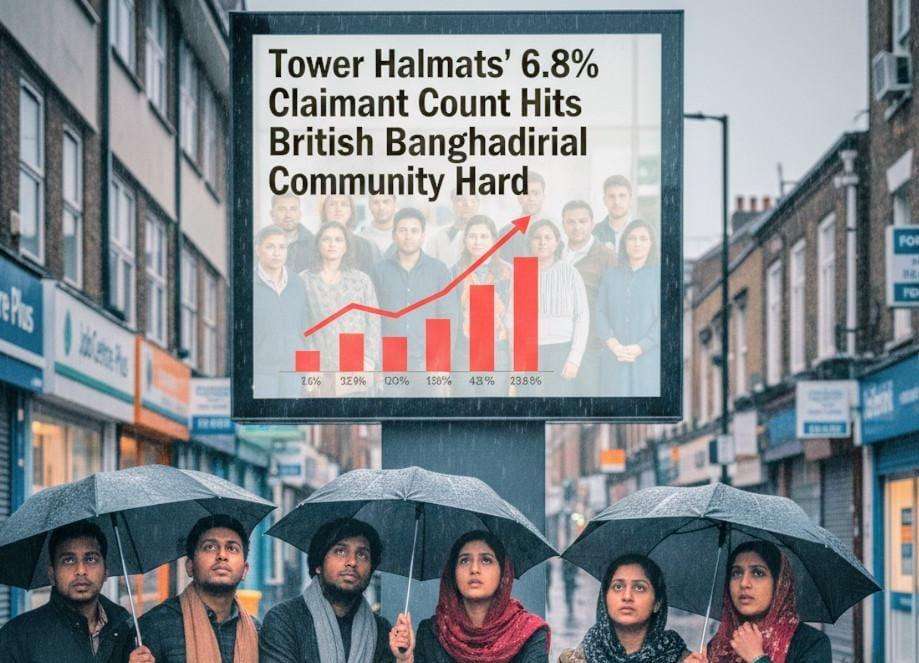The widening gap between London's rising unemployment and the national average is sounding an urgent economic alarm in East London, with boroughs like Tower Hamlets facing disproportionate pressure. While the capital's overall unemployment rate has surged to a decade-high of 6.5%—significantly above the UK's 5% rate—new data underscores the intense strain on its most vibrant and historically vulnerable communities, particularly the British Bangladeshi population.
The Claimant Count Crisis in East London
Official figures for October 2025 reveal that London's jobseeker benefit claimant count stands at 5.8% of its working-age population, a striking 1.8 percentage points higher than the UK average. In the borough of Tower Hamlets, which is home to the country's largest concentration of British Bangladeshis (comprising over a third of its residents), the claimant count reached 17,260 people, or 6.8% of adults. This positions Tower Hamlets among the top five London boroughs for benefit claims, mirroring the high rates seen in neighbouring Newham (8.2%) and Brent (7.7%).
This high local claimant count is compounded by historical economic challenges. Unemployment rates for the Bangladeshi and Pakistani communities in London were already flagged as among the most excluded from the labour market, with the unemployment rate for Bangladeshi and Pakistani women in London reported as significantly higher than for men from the same backgrounds. While comprehensive, up-to-date specific unemployment figures for the British Bangladeshi community in Tower Hamlets for October 2025 are still emerging, the high overall claimant numbers in this ethnically concentrated borough strongly indicate that this demographic is bearing the brunt of the downturn.
Systemic Barriers and Sector-Specific Slump
The underlying causes for London's downturn—a slump in hiring and continued struggle with rising business costs—are hitting sectors that traditionally employ large numbers of British Bangladeshi workers, such as hospitality and retail, particularly hard. The average regular wage growth in the three months to September 2025 also pulled back to 4.6%, suggesting diminishing financial buoyancy for employed residents.
For a community known for high rates of economic inactivity among women, and with a significant reliance on self-employment as a route out of joblessness, the current economic climate is proving particularly challenging. Exacerbating the issue is the systemic nature of the barriers faced, including a lack of access to professional networks and tailored employment support, as previously highlighted by policy experts.
Political and Economic Outlook
The bleak employment data, which the Office for National Statistics (ONS) confirmed represents the highest level of unemployment since August 2016 (excluding the pandemic-era distortion), is adding pressure to national politics. Experts are citing the weaker-than-expected figures as strengthening the argument for the Bank of England to consider an interest rate cut next month to stimulate growth.
Furthermore, the figures land just ahead of Chancellor Rachel Reeves' autumn budget, where it is widely anticipated she will announce tax rises in an effort to invigorate the sluggish UK economy. For the residents of Tower Hamlets, especially its British Bangladeshi majority, the budget's measures will be closely scrutinised for targeted investments and support designed to reverse the alarming trend of rising joblessness and economic exclusion in East London.




.jpg)



.svg)



.jpg)